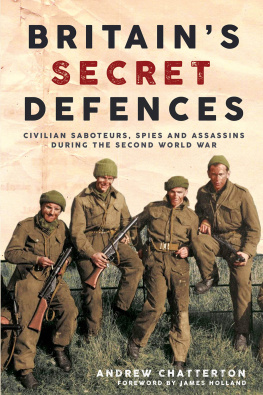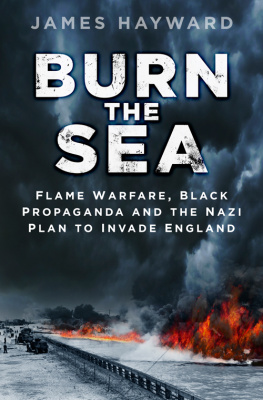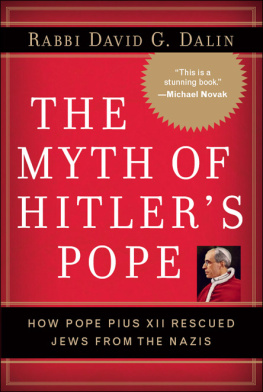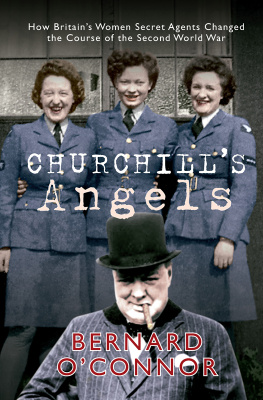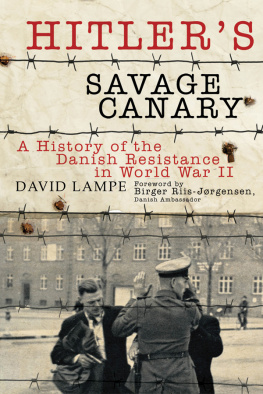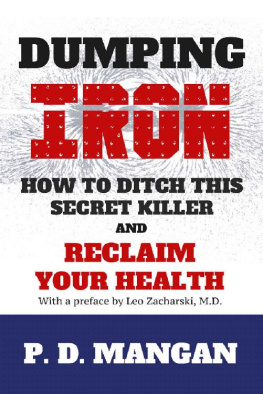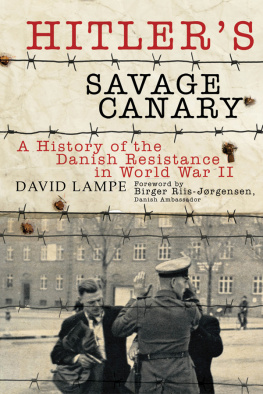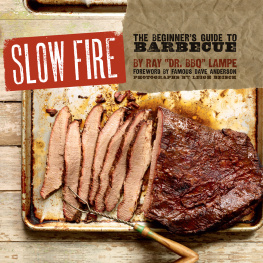The Last Ditch

The Last Ditch
Britains Secret Resistance and the Nazi Invasion Plans
David Lampe
Foreword by Gary Sheffield
The Last Ditch: Britains Resistance Plans Against the Nazis
Published in 2007 by Greenhill Books, Lionel Leventhal Limited
www.greenhillbooks.com
This paperback edition published in 2013 by Frontline Books,
an imprint of Pen & Sword Books Ltd.,
47 Church Street, Barnsley, S. Yorkshire, S70 2AS
www.frontline-books.com
and
Published and distributed in the United States of America and Canada
by Skyhorse Publishing, 307 West 36th Street, 11th Floor, New York, NY 10018
www.skyhorsepublishing.com
Skyhorse Publishing books may be purchased in bulk at special discounts for sales promotion, corporate gifts, fund raising, or educational purposes. Special editions can also be created to specifications. For details, contact Special Sales Department, Skyhorse Publishing, 307 West 36th Street, 11th Floor, New York, NY 10018 or email
Copyright David Lampe, 1968
Foreword Gary Sheffield, 2007
The right of David Lampe to be identified as the author of this work has been asserted by him in accordance with the Copyrights, Designs and Patents Act 1988.
UK edition: ISBN 978-1-84832-719-1
US edition: ISBN 978-1-62087-808-8
eISBN 978-1-47387-764-1
Mobi ISBN 978-1-47387-763-4
All rights reserved. No part of this publication may be reproduced, stored in or introduced into a retrieval system, or transmitted, in any form, or by any means (electronic, mechanical, photocopying, recording or otherwise) without the prior written permission of the publisher. Any person who does any unauthorized act in relation to this publication may be liable to criminal prosecution and civil claims for damages.
CIP data records for this title are available from the British Library.
Library of Congress Cataloging-in-Publication Data is available on file.
For more information on our books, please visit
or write to us at the above address.
ILLUSTRATIONS
Major-General Sir Colin Gubbins (Photo: Terence Le Goubin)
A page from Informationsheft GB., containing photographs of people wanted for interrogation by the Gestapo (Copy photo: Terence Le Goubin)
GPO Highworth (Photo: David Lampe)
Coleshill House (Copy photo: Terence Le Goubin)
Auxiliary Units Intelligence Officers, 1941-2 (Copy photo: Terence Le Goubin. Original, courtesy Brigadier Major)
Brigadier Bill Major (Photo: Terence Le Goubin)
Miss Beatrice Temple (Photo: Terence Le Goubin)
Resistance Members today (All photos: Terence Le Goubin)
Brigadier Billy Beyts
Lieut.-Colonel Norman Field
Colonel Andrew Croft
Documentation and equipment of the German Occupation Force and the British Resistance (Photo: Terence Le Goubin. Some equipment supplied by courtesy of the Imperial War Museum)
The Countrymans Diary (Photo: John R. Freeman)
A British Resistance battalion badge (Photo: Terence Le Goubin)
Auxiliary Units hideouts in Kent (Photo: Terence Le Goubin. Map courtesy The Controller, H.M.S.O.)
A Resistance patrol from Kent (Photo: Terence Le Goubin)
The entrance to one of the wartime hideouts (Photo: David Lampe)
Resistance Members today (All photos: Terence Le Goubin)
Miss Eleanor Norman-Butler
Roger Weeley
Paddy OMara
R. F. H. Darwall Smith
A. G. Fiddes-Watt
Adrian Monck-Mason
FOREWORD
W hen David Lampe wrote The Last Ditch in the late 1960s, in one sense he was following a fairly well trodden path. Imaginary invasions of England were favourite topics for nineteenth and early twentieth century writers such as Sir George Chesney, whose short story of 1871 The Battle of Dorking, and Erskine Childers, whose The Riddle of the Sands (1903) were both intended to alert the nation to the state of Britains defences. Edwardian newspapers used serialisations of invasion stories to increase sales in towns in the invaders path, while Guy du Mauriers play An Englishmans Home (1909) gave, in the short term, a timely boost to recruiting for the fledgling Territorial Force. The Victorians and Edwardians, were, of course, writing fantasy, the stuff of strategic nightmares, David Lampes perspective was rather different. Unlike his predecessors, he was not writing fiction but history.
To a large extent, public fears of invasion had dwindled between the wars, to be replaced by anxieties expressed in books such as L. E. O. Charltons War Over England (1936) that focussed on future air raids and gas bombs. The events of May-June 1940 changed all that. The defeat of the Allied armies in France and Flanders; the hasty evacuation of the remains of the British Expeditionary Force from Dunkirk and other ports, leaving much of their equipment behind; the French surrender and the German occupation of the western European seaboard from Norway to the Spanish frontier; all this seemed to presage a sea and airborne invasion of the United Kingdom. Lampes subject is the preparations that were made by both sides for Operation Sea Lion the invasion that never happened.
A number of books relevant to Operation Sea Lion, some of them very good, have appeared in the four decades since the publication of The Last Ditch . However, I would suggest that it retains its value for three reasons.
Firstly, David Lampe (1923-2003) was well equipped to write on this subject. Lampe had a military backgroundan American who settled in Britain, he had served in the USAF for some yearsand he had an instinctive feel for his material. He had already published on other Second World War subjects, including the Danish Resistance, and seems to have been indefatigable in tracking down and interviewing witnesses. Writing only 25 years after the event, Lampe was able to talk to many of the participants including former members of the Auxiliary Units, the nascent British resistance. Lampe himself wrote that early in his research he stumbled on the right people, and so he was able to give a much fuller picture of this shadowy organisation than had been possible hitherto. His contacts included Major General Colin Gubbins, who as a major was one of the key figures in the creation of the Auxiliary Units, and Eleanor Norman-Butler, a radio operator with the resistance. The book includes two particularly evocative photographs of Auxiliary Unit members a quarter of a century on. One shows Gubbins, the archetypical city gent looking out of place in the swinging London of 1967; the other, Paddy OMara, is selling newspapers outside Colchester Railway station, wearing his 203 Battalion badge. This is in spite of the fact that, rather like workers at Bletchley Park, in the 1960s a number of former members of Auxiliary Units still regarded themselves as bound by a vow of silence. A well-known Master of Foxhounds in East Suffolk, Lampe recorded, one of the first in his county to be taken into the Resistance, refused to say anything except All I did was go out at night to help train members of the Home Guard .
In 2006, the clandestine army of the Auxiliary Units is no longer so secret. A number of other writers have tackled the subject, Although we know a great deal more about the British Resistance than we did when Lampes book appeared, it remains essential reading as a pioneering work.




